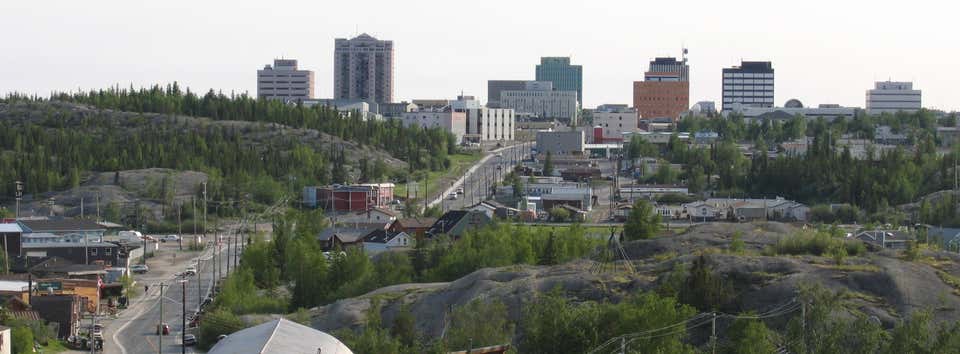- Overview
- Essential Info
- Hotels
- Things To Do

Yellowknife Essential Info
Overview
Yellowknife (English pronunciation: /ˈjɛloʊnaɪf/; 2011 population: 19,234) is the capital and only city, as well as the largest community in the Northwest Territories (NT or NWT), Canada. It is located on the northern shore of Great Slave Lake, approximately 400 km (250 mi) south of the Arctic Circle, on the west side of Yellowknife Bay near the outlet of the Yellowknife River. Yellowknife and its surrounding water bodies were named after a local Dene tribe once known as the 'Copper Indians' or 'Yellowknife Indians', referred to locally as the Yellowknives Dene First Nation, who traded tools made from copper deposits near the Arctic Coast. The current population is ethnically mixed. Of the eleven official languages of the Northwest Territories, five are spoken in significant numbers in Yellowknife: Dene Suline, Dogrib, South and North Slavey, English, and French. In the Dogrib language, the city is known as Sǫ̀mbak'è (Som-ba Kay) ("where the money is").
The Yellowknife settlement is considered to have been founded in 1934, after gold was found in the area, although commercial activity in the present-day waterfront area did not begin until 1936. Yellowknife quickly became the centre of economic activity in the NWT, and was named the capital of the Northwest Territories in 1967. As gold production began to wane, Yellowknife shifted from being a mining town to a centre of government services in the 1980s. However, with the discovery of diamonds north of Yellowknife in 1991, this shift has begun to reverse.
Basics
Best Time To Go
Unknown
Current Time
Current Weather
Cloudy
Keep exploring with the Roadtrippers mobile apps.
Anything you plan or save automagically syncs with the apps, ready for you to hit the road!
Connect with us and hit up #roadtrippers
Tall tales, trip guides, & the world's weird & wonderful.